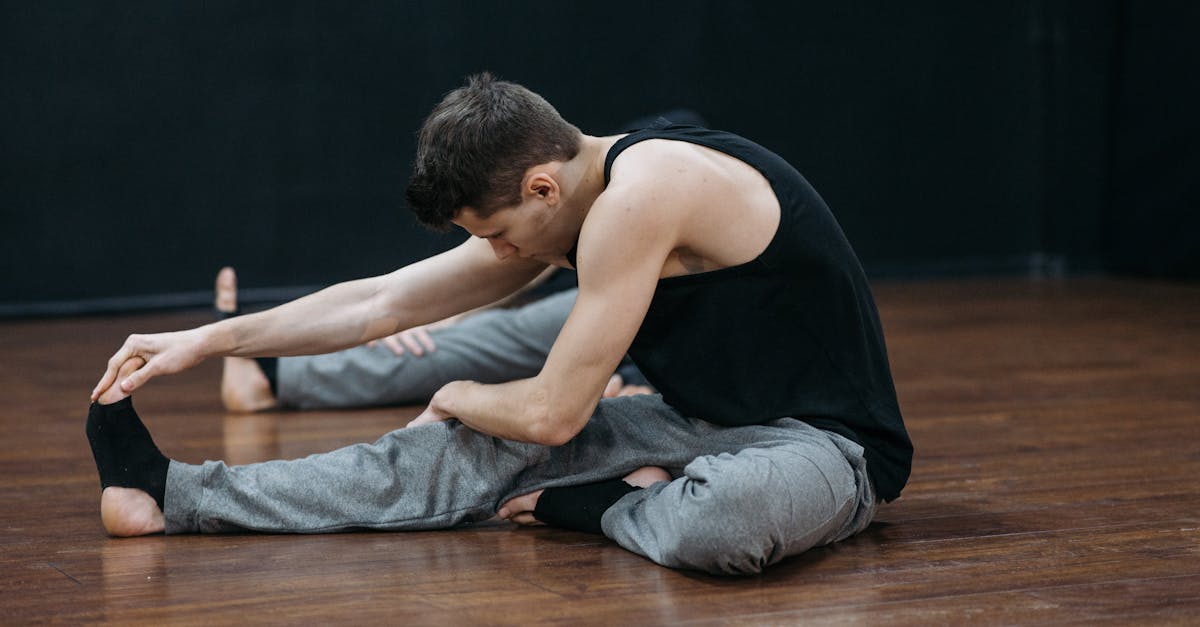
When it comes to building a balanced physique, How to WorkOut Hamstrings often get overlooked. These powerful muscles play a crucial role in everything from athletic performance to injury prevention. I’ve learned that incorporating targeted hamstring workouts not only enhances strength but also improves overall leg stability and mobility.
In this article, I’ll share effective exercises and tips to help you develop your hamstrings. Whether you’re a seasoned gym-goer or just starting out, understanding how to properly train these muscles can make a significant difference in your fitness journey. Let’s dive into the best ways to sculpt and strengthen those hamstrings for better results and improved performance.
- Importance of Hamstring Workouts: Strong hamstrings are essential for overall leg strength, stability, and injury prevention, playing a crucial role in athletic performance and daily activities.
- Effective Exercises: Incorporate a variety of exercises such as deadlifts, hamstring curls, glute bridges, and various stretches to target and strengthen the hamstrings effectively.
- Common Training Mistakes: Avoid errors like neglecting form, overtraining, skipping warm-ups, and ignoring flexibility, as these can lead to ineffective workouts and increased injury risk.
- Balanced Training Approach: Focus on combining strength training with flexibility and mobility exercises, ensuring a comprehensive regimen that promotes muscle growth and function.
- Listening to Your Body: Pay attention to pain signals and modify exercises when necessary to prevent injuries and support long-term fitness success.
- Recovery and Frequency: Schedule adequate recovery days between hamstring workouts and maintain a training frequency of 1-2 times per week for optimal results.
How to WorkOut Hamstrings
How to WorkOut Hamstrings plays a crucial role in overall leg strength and stability. Strong hamstrings support proper movement patterns, contributing to balance during athletic activities. Athletes often rely on hamstrings for explosive actions, such as sprinting and jumping. I notice that neglecting these muscles can lead to imbalances, which may increase the risk of injuries.
Injury prevention is another significant reason to focus on hamstrings. Weak hamstrings can lead to strains and tears, especially during high-intensity workouts. Strengthening these muscles reduces the likelihood of such injuries and enhances endurance.
Hamstrings also play a vital role in everyday movements. Activities like walking, climbing stairs, and standing all depend on hamstring strength. Improved hamstring functionality results in better performance in daily tasks and recreational activities.
Incorporating hamstring workouts into a fitness routine enhances overall performance. This not only leads to improved athletic capacity but also supports better posture and spinal alignment. Engaging these muscles regularly fosters greater mobility and range of motion, which I find valuable for overall fitness longevity.
Effective Exercises How to WorkOut Hamstrings
Incorporating effective exercises for How to WorkOut Hamstrings strengthens the muscles and improves overall leg functionality. Below are two categories of exercises: strength training and flexibility/stretching.
Strength Training Exercises
- Deadlifts: Deadlifts engage the entire posterior chain, focusing on hamstrings. I typically perform both conventional and Romanian variations, using proper form to maximize muscle activation.
- Hamstring Curls: Hamstring curls target the muscles directly. I find using a machine or resistance bands helps isolate the hamstrings effectively.
- Glute Bridges: Glute bridges not only work the glutes but also engage the hamstrings. I perform these by lying on my back, placing feet flat on the floor, and elevating my hips.
- Lunges: Forward lunges are effective for hamstring development. I ensure my knee doesn’t extend past my toes, focusing on pushing back through the heel of the front foot.
- Stiff-Legged Deadlifts: For emphasizing the hamstrings, I often include stiff-legged deadlifts in my routine. Maintaining a slight bend in my knees allows me to target the muscle group more effectively.
- Standing Hamstring Stretch: I stand with one foot elevated and lean forward, feeling the stretch in my hamstring. This helps maintain flexibility.
- Seated Hamstring Stretch: Seated with my legs extended, I reach towards my toes. Holding this position deepens the stretch and enhances flexibility.
- Foam Rolling: Incorporating foam rolling post-workout aids recovery. I roll along my hamstrings to relieve tension and improve muscle elasticity.
- Figure Four Stretch: I lie on my back, placing one ankle above the opposite knee. This stretch targets both the hamstrings and glutes.
- Yoga Poses: Incorporating poses like Downward Dog and Forward Fold promotes flexibility in my hamstrings, contributing to overall muscle harmony.
Common Mistakes To Avoid
When How to WorkOut Hamstrings, avoiding errors ensures effective training and reduces injury risk. Here are common mistakes to watch for:
- Neglecting Form: Prioritizing proper form during exercises like deadlifts and hamstring curls prevents strain. Focus on maintaining a neutral spine and controlled movements.
- Overtraining: Exercising hamstrings too frequently can lead to fatigue and injuries. Incorporate rest days into your routine to allow for recovery.
- Ignoring Warm-up: Skipping warm-up exercises increases the risk of pulling a hamstring. Begin with dynamic stretches or light cardio to prepare your muscles.
- Debt on Balance: Relying too much on one leg can create muscle imbalances. Include unilateral exercises, such as single-leg deadlifts, to strengthen both hamstrings equally.
- Neglect of Flexibility: Overlooking flexibility training can reduce hamstring performance. Regularly incorporate stretching, like the seated hamstring stretch, to enhance muscle length.
- Lack of Variation: Sticking to one type of exercise limits muscle growth. Mix strength and flexibility workouts for balanced hamstring development.
- Ignoring Pain: Dismissing pain signals can lead to serious injuries. Pay attention to discomfort and adjust or stop an exercise if needed.
By recognizing and avoiding these mistakes, I can develop stronger hamstrings safely and effectively.
Tips For A Balanced Hamstring Workout
- Incorporate Variability
Use a mix of exercises targeting various hamstring functions. Include both concentric and eccentric movements with strength training, flexibility, and functional exercises. - Include All Muscle Groups
Train not just hamstrings but also quadriceps and glutes to prevent imbalances. Engaging these muscle groups together enhances overall leg strength and stability. - Prioritize Proper Form
Focus on executing movements with correct form during each rep. Proper technique minimizes the risk of injury and maximizes muscle engagement, leading to better results. - Utilize Progressive Overload
Gradually increase the weight or resistance in my workouts to continuously challenge my hamstrings. This approach promotes muscle growth and strength over time. - Incorporate Dynamic Stretching
Warm up with dynamic stretching before workouts to prepare my hamstrings. Movements like leg swings or walking high kicks improve blood flow and flexibility. - Schedule Recovery Days
Allow adequate recovery between hamstring workouts to enable muscle repair. Include active recovery options like light stretching or foam rolling to reduce soreness. - Balance Strength and Flexibility
Dedicate time to both strengthening and stretching my hamstrings. This balance prevents tightness and enhances overall mobility, supporting better performance. - Listen to My Body
Pay attention to any pain signals during workouts. Modifying exercises or reducing intensity can prevent injuries and ensure long-term success. - Monitor Workout Frequency
Avoid training hamstrings too frequently. Aim for 1-2 dedicated hamstring sessions per week, allowing sufficient recovery between workouts. - Consider Compound Movements
Integrate compound exercises like deadlifts and lunges that engage multiple muscle groups while targeting hamstrings. These movements enhance functional strength and coordination.
By following these tips, I can develop balanced hamstring strength and improve overall leg function, leading to enhanced athletic performance and daily movement efficiency.
Strengthening my How to WorkOut Hamstrings has made a noticeable difference in my overall fitness journey. By incorporating the right exercises and avoiding common mistakes, I’ve improved my performance and reduced my risk of injury.
I’ve found that balancing strength training with flexibility work is key. It not only supports my athletic endeavors but also enhances my everyday movements.
As I continue to prioritize my hamstring workouts, I’m excited to see how they’ll contribute to my long-term fitness goals. Strong hamstrings are essential for anyone looking to elevate their performance and maintain a healthy, active lifestyle.









